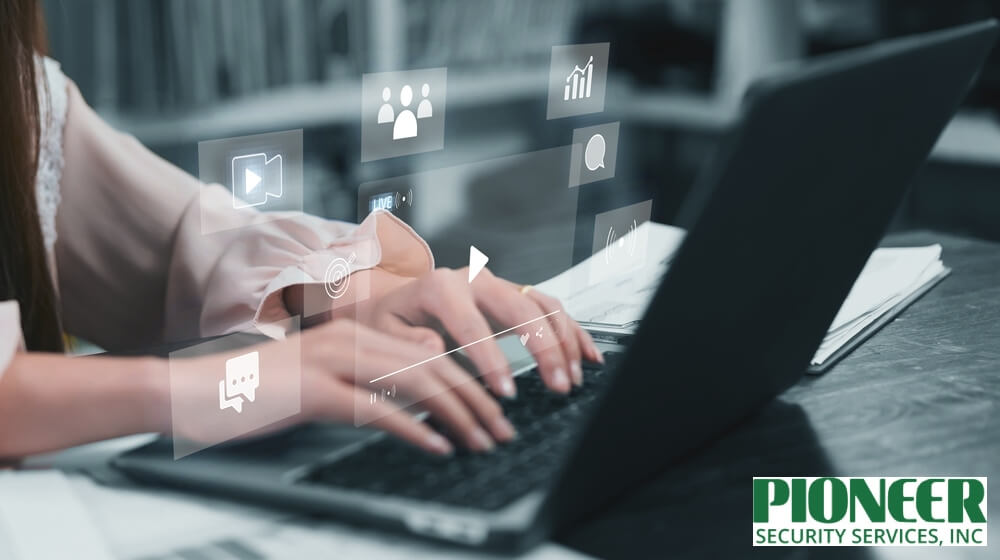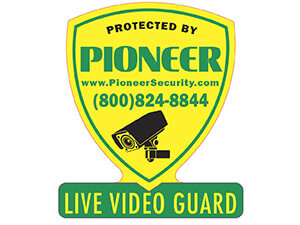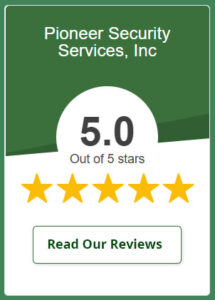Live video monitoring in a commercial setting refers to security systems that integrate surveillance cameras, AI-driven analytics, and trained human operators to protect a business in real-time. Video feeds are continuously scanned for unusual behavior such as loitering, unauthorized access, or inventory tampering.
When the AI flags something, human operators verify and react immediately, dispatching security, alerting managers, or triggering alarms. This matters because theft and fraud inside businesses are massive drains. According to a 2017 report by HR Dive, citing CNBC and Statista, employee theft costs U.S. businesses approximately $50 billion each year.
This guide will demonstrate how live video monitoring helps prevent theft, enhance employee safety, support regulatory compliance, and deliver cost savings.
What Is Commercial Live Video Monitoring and How It Works
Commercial live video monitoring is a real-time security service that combines surveillance cameras, AI-driven analytics, and trained human operators to protect people, property, and inventory. Cameras stream live video to a monitoring center where AI scans frames for unusual behavior such as loitering, trespassing, or shoplifting.
When suspicious activity is flagged, a human operator reviews the clip and decides the next step. Operators can speak through two-way audio, alert on-site staff, or contact police.
Step-by-step process includes:
- Cameras capture activity and stream live.
- AI software analyzes frames for patterns and anomalies.
- Suspicious behavior is flagged.
- Live security operators verify the threat.
- Operators intervene with voice-downs, on-site alerts, or police notification.
This process combines the efficiency of machines with the judgment of humans. Unlike passive surveillance, which only records incidents, live monitoring responds immediately, preventing theft and protecting employees.
Difference Between Commercial Monitoring and Traditional Security Guards
Both security guards and live monitoring systems deter crime, but their effectiveness and costs differ significantly. Guards provide a physical presence and can intervene on-site; however, patrol routes, human fatigue, and shift availability limit their usefulness. Monitoring, by contrast, gives continuous coverage across multiple areas without putting staff at risk.
Costs are another key factor. Based on the U.S. Bureau of Labor Statistics, the median annual wage for a security guard is $38,370 (May 2024). New Hampshire state procurement documents provide concrete per-location monitoring contract fees (e.g., $30.00 per location per month for fire alarm monitoring), illustrating how government contracts sometimes publish per-location monitoring fees.
Still, the dollar amounts can be significantly lower than your $500–$1,000 figure, depending on the type of service. Key Components in a Commercial Monitoring Setup.
An effective live monitoring system includes several interconnected elements:
- HD cameras for wide coverage and unmistakable evidence.
- AI analytics for object detection, motion tracking, and behavior analysis.
- Two-way voice systems to warn intruders and prevent escalation.
- Cloud storage for secure, time-stamped evidence that supports investigations.
- Alarm and access system integration to quickly verify alerts.
- Security operators are trained to validate AI alerts and take immediate action.
For example, in a retail store, AI may detect someone concealing goods. The operator reviews the footage, speaks directly to the suspect through two-way audio, alerts floor staff, and saves the recording. This coordinated response deters theft without requiring a guard to physically confront the individual.
Why Businesses Need Live Video Monitoring Today?
Modern threats are growing in scale and complexity. Retail shrinkage, employee theft, vandalism, and fraudulent liability claims create serious challenges for businesses.
As per the National Retail Federation’s National Retail Security Survey, shrink accounted for $112.1 billion in losses in fiscal year 2022, equal to 1.6 percent of total sales. With organized retail crime and insider theft on the rise, businesses cannot rely solely on locks or traditional CCTV systems to protect their assets. Live monitoring offers a proactive layer of protection that addresses these threats before they escalate.
Rising Threat of Theft and Internal Shrinkage
Shrinkage comes from both external shoplifting and internal employee theft. Live monitoring tackles both problems. It alerts staff to suspicious customer behavior and helps catch dishonest employees at registers or in stockrooms.
For example, a retailer implementing live monitoring can reduce shoplifting incidents by warning offenders through audio before police are called. Case studies of similar deployments confirm measurable reductions in losses when proactive tracking is combined with clear internal policies and procedures.
Workplace Safety for Employees and Visitors
Live monitoring also protects employees and visitors, especially those working late hours. An operator can intervene with a voice-down if someone harasses a staff member in a parking lot, or call for help if an employee faces a dangerous situation.
The Occupational Safety and Health Administration (OSHA) notes that video systems can play a crucial role in preventing workplace violence when used in conjunction with proper training and effective policies. Monitoring, therefore, creates safer environments for both employees and visitors while giving managers peace of mind.
Compliance and Liability Protection for Businesses
Video evidence plays a critical role in compliance and liability protection. OSHA permits video documentation to support workplace safety inspections and investigations, providing employers with a means to demonstrate compliance with safety standards. The OSHA directive on inspections
highlights the value of video as part of serious violation documentation. For businesses, this means fewer disputes, stronger defenses against false claims, and lower insurance costs. Insurers are increasingly recognizing video evidence as a reliable means to validate claims and deter fraud, which helps companies save on premiums and payouts.
Main Commercial Benefits of Live Video Monitoring
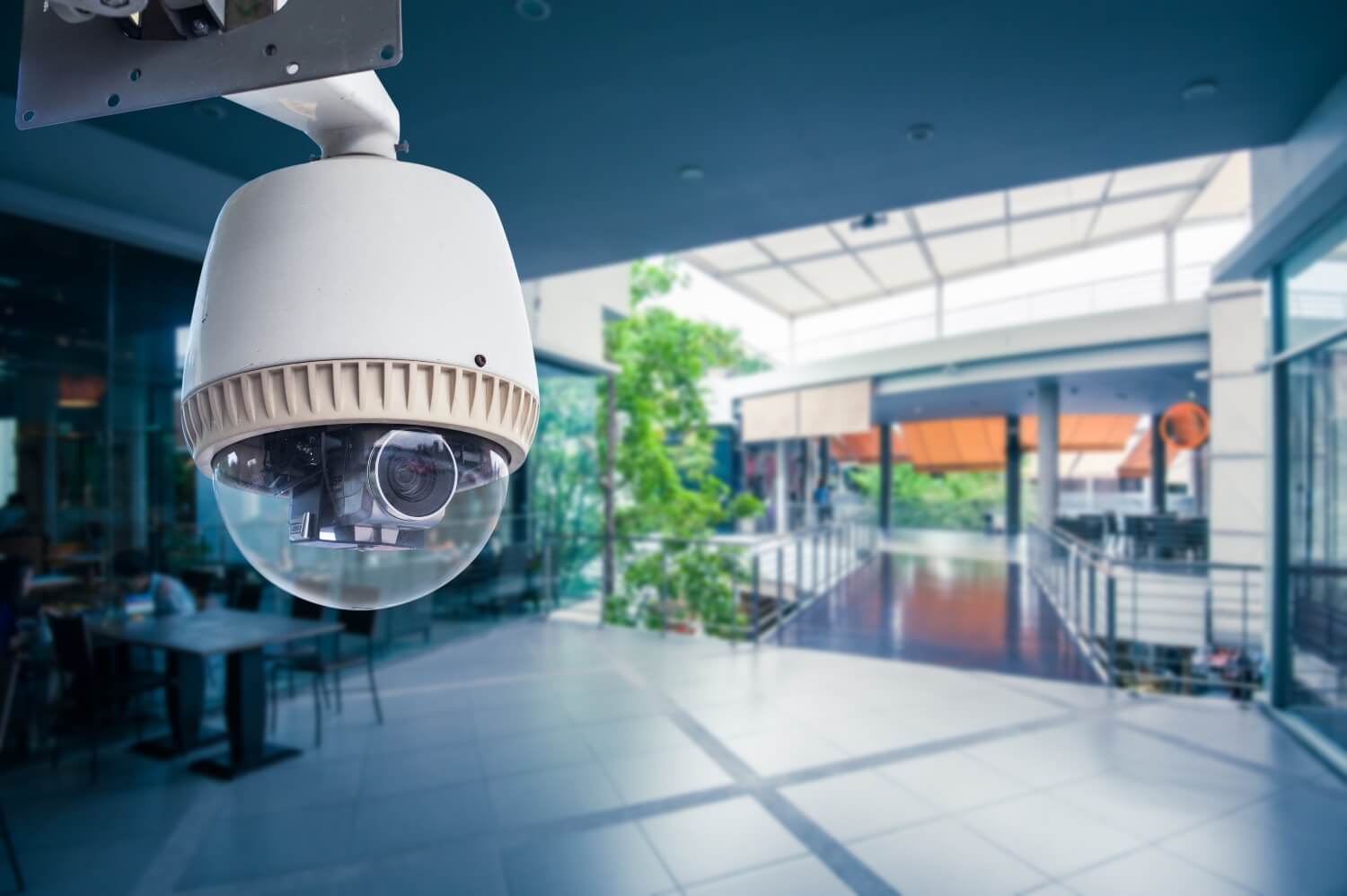
Live video monitoring is not just another surveillance tool. It actively protects businesses by combining AI, cameras, and live operators to prevent crime, safeguard people, and save money. Below are the key benefits explained with data and practical examples.
1. Theft and Burglary Prevention Across Businesses
Criminals look for easy targets. When they see cameras connected to live monitoring, they are aware that the risk of being caught is higher. Based on a report on burglary alarms, approximately 95 percent of burglar alarm activations are false; yet, the presence of monitored systems still deters many break-ins before they occur.
For example, a convenience store chain in Texas added live monitoring across 50 locations. Within three months, attempted break-ins dropped because operators were able to speak directly to intruders through speakers, warning them that police had been called. The result was a decrease in burglaries and lower repair costs.
2. Protection of High-Value Assets and Inventory
Warehouses, data centers, and factories store millions of dollars’ worth of goods and equipment. Construction sites are also frequent targets, especially for copper theft. The Department of Energy has documented that metal theft from utilities and construction can pose significant safety hazards and result in annual losses in the billions of dollars.
In practice, a construction company that faced repeated instances of copper thefts utilized monitored cameras with AI-powered motion detection. Operators spotted intruders cutting fencing after hours and alerted police before the robbery occurred. The stolen materials were recovered, resulting in a savings of tens of thousands of dollars in losses.
3. 24/7 Security for Large or Remote Facilities
Large campuses and remote warehouses are difficult to patrol. A single guard cannot monitor everything, especially at night or across multiple acres. Live monitoring covers blind spots continuously. Operators can monitor multiple sites simultaneously, ensuring that even remote storage yards remain secure and protected.
For example, an agricultural supplier with a facility in a rural area relied on one night guard who could not cover all access points. After adding monitored cameras, operators detected unauthorized trucks entering the property and prevented fuel theft that had previously gone unnoticed.
4. Reduced False Alarms and Faster Police Response
False alarms waste time and reduce police responsiveness. Studies show that 90–99 percent of all burglar alarm calls are false. With live monitoring, AI filters routine activity, and operators verify alerts before escalating them to law enforcement.
This verification makes a big difference. Many police departments prioritize verified alarm calls because they know an actual operator has confirmed the threat. Businesses benefit from quicker response times and higher arrest rates compared to unverified alarms.
5. Cost Savings Compared to Hiring Security Guards
Hiring multiple guards for round-the-clock protection is costly. According to the Bureau of Labor Statistics, the median annual wage for security guards is $38,370, which translates to more than $54,000 once employer costs are taken into account. That is about $4,500 per month per guard.
In comparison, professional live monitoring costs $500 to $1,000 per site per month. A retail center that replaced three overnight guards with monitoring reduced costs by almost 60 percent while improving coverage with cameras and analytics that never get tired.
Industries That Benefit Most from Live Video Monitoring
Different industries face unique risks. Below are examples of how live monitoring effectively addresses those challenges.
Retail and Shopping Centers
Retail shrinkage is one of the biggest challenges in the sector. The National Retail Federation reported that the average number of shoplifting incidents rose 93 percent between 2019 and 2023, with the average dollar loss per incident increasing 90 percent.
Live monitoring reduces losses by identifying shoplifters in real-time and warning them through two-way audio. In one case, a department store utilized live monitoring to deter organized groups from attempting theft, resulting in a 50% reduction in incidents within six months.
Construction Sites and Warehouses
Equipment and raw materials are vulnerable on open construction sites and in storage facilities. Trespassers often target these after hours. Monitored cameras allow operators to detect movement, trigger lights or alarms, and alert law enforcement before damage occurs. A warehouse in Illinois, for example, utilized live monitoring to prevent repeated pallet thefts and recover goods valued at over $20,000.
Banks, ATMs, and Financial Institutions
Financial institutions face risks of robbery, ATM tampering, and fraud. Monitoring adds another layer of defense. Operators can detect loitering near ATMs, identify unusual withdrawal patterns, and quickly call authorities. Recorded footage also provides critical evidence for law enforcement and insurance claims, reducing financial losses.
Corporate Offices and Business Parks
After hours, office buildings and business parks are vulnerable. Employees working late may feel unsafe, and unauthorized individuals may attempt to gain entry. With live monitoring, operators can ensure access is secure, intervene with voice-downs if suspicious individuals are detected, and call for help. In one office park, operators guided employees safely to their cars by monitoring parking lots remotely during late-night shifts.
Manufacturing Plants and Distribution Centers
Manufacturing plants and distribution centers house valuable machinery and goods. Live monitoring secures production floors, loading docks, and transit areas. It also improves workplace safety by detecting unsafe activity and alerting supervisors. A distribution center in California integrated live monitoring with its conveyor system, enabling operators to review incidents and quickly protect workers and shipments.
Technology That Enhances Commercial Monitoring
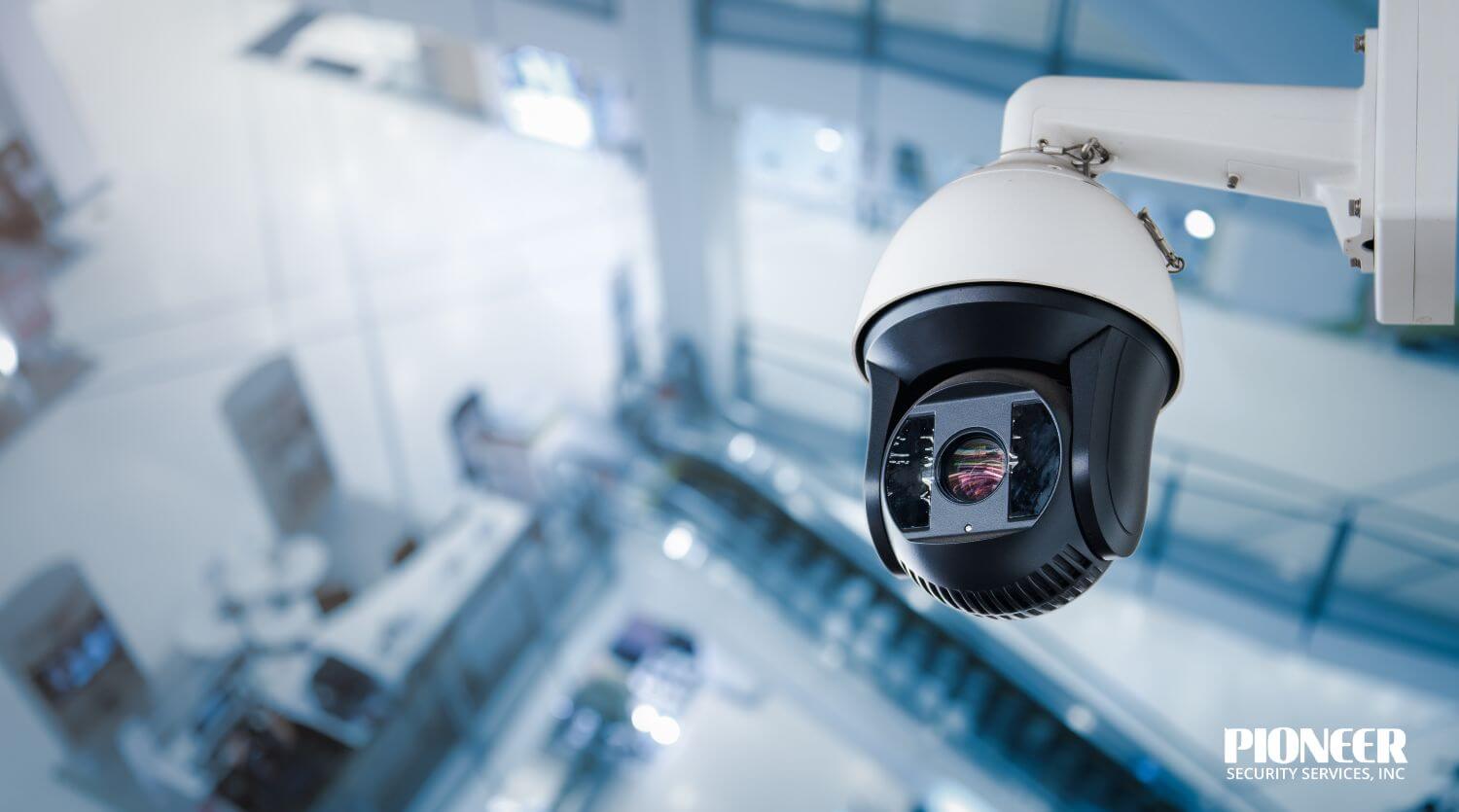
Advanced technologies make live video monitoring far more effective than simple cameras. These tools enable faster detection, more reliable verification of threats, and an integrated response.
AI and Analytics for Proactive Threat Detection
Modern AI analytics are central to elevating monitoring from reactive to proactive protection.
Key features include:
- License plate recognition (LPR): Identifies vehicles entering or leaving restricted zones. Abnormal entries trigger alerts.
- Facial recognition: Matches faces against watchlists or staff access logs. Helps detect unauthorized individuals, repeat offenders, or personnel with lost badges.
- Behavior analysis: Algorithms identify unusual behavior, such as loitering, running (where prohibited), congregating in restricted areas, or individuals carrying large packages after hours.
Example: A logistics firm installed AI-based behavior analysis cameras in its warehouses. When someone attempted to carry pallets of goods late at night through less-traveled routes, the system flagged the movement. Operators intervened via two-way voice, and local staff caught the individuals. Losses dropped by about 45% in that facility in six months.
Two-Way Voice for Real-Time Crime Intervention
Two-way voice allows remote operators to issue voice-down warnings such as “Security is watching, leave immediately.”
- This warning often deters intruders before they act.
- It provides a non-violent, non-confrontational method for stopping a crime in progress.
- It also signals to observers (staff, customers, and even criminals) that the site is actively monitored.
Case example: A retail chain utilized two-way voice communication during late-night shifts in high-risk stores with a history of shoplifting. Their operators warned individuals over speakers. The stores saw a reduction of over 40% in shoplifting incidents in the first three months.
Integration With Access Control and Alarm Systems
Integration adds layers of defence, so no part of security works in isolation.
- When AI detects an intruder, doors (via access control) can automatically lock to contain or delay movement.
- Alarms (intrusion, glass break, motion sensors) can trigger notifications to operators.
- Operators viewing the live feed can verify alarm triggers and decide whether to escalate the situation, call local security, or notify the police.
Example: A data center had both electronic door locks tied to card readers and monitored video. One night, motion sensors in a usually locked corridor triggered an alarm. The camera stream showed someone attempting to use a stolen badge.
Doors were closed, local alarms sounded, and operators contacted the authorities. The individual was apprehended before reaching sensitive equipment.
Financial Benefits of Commercial Live Monitoring
Live video monitoring is an investment that yields measurable financial returns. Below are the key economic benefits, accompanied by real data and case studies.
Lower Insurance Premiums for Monitored Businesses
Insurance companies often offer discounts to businesses that reduce risk by implementing verified security systems. Reports indicate that companies with monitored alarms and video verification can receive premium discounts of 10% to 20%, depending on the sophistication of the system.
Construction sites, in particular, have seen an average premium reduction of 15-20% for security systems with video verification, as well as additional discounts when using professional monitoring.
These premium reductions directly reduce ongoing costs, thereby accelerating the return on investment for businesses that use live monitoring.
Reduced Losses From Theft and Vandalism
Live video monitoring helps catch incidents early, deter would-be criminals, and preserve evidence.
- A company that replaced on-site guards with monitored video for at least some hours reported a 70% reduction in annual security costs, as well as a marked decrease in vandalism and theft incidents.
- Another case: A retail centre upgraded to an integrated system featuring video, alarm, and two-way voice. In six months, theft/vandalism losses dropped by more than 50%.
- Specific number: A construction site deterred 42 theft attempts in one month after deploying mobile video towers with live audio prompts, cameras, and monitoring.
Lower Operational Costs Compared to On-Site Guards
Using guards is expensive, not just in wages but also in benefits, supervision, training, night shift premiums, and other related costs. Live monitoring spreads those fixed costs across multiple sites and removes much of the continuous labor cost.
According to multiple reports, businesses that transitioned from on-site guards to remote monitoring experienced operational expenses 40-70% lower than those with on-site guards.
For example, a retail client paying approximately $420,000/year for guard coverage reduced its cost to around $68,000/year after deploying remote monitoring towers and cameras, an 80-90% cost reduction compared to full manned guarding.
Challenges and Solutions in Commercial Monitoring
While live video monitoring offers significant advantages, businesses often raise valid concerns before adopting it. Addressing these challenges with practical solutions ensures the system builds trust and delivers reliable protection.
Privacy and Employee Concerns
One of the main objections comes from employees who may feel they are constantly being watched. If handled poorly, this can create distrust or even legal issues. The solution is to develop a clear and transparent monitoring policy. Employees should be informed about the locations of cameras, their intended uses, and the storage of data.
Businesses must also comply with regional privacy and workplace laws, such as limiting the use of cameras in areas where monitoring is inappropriate (e.g., restrooms or personal changing areas). Ethical monitoring policies, focused only on safety, theft prevention, and compliance, help reassure staff that the system is designed to protect, not micromanage.
Network and Technical Reliability
Another challenge involves concerns about downtime or system failure. Because monitoring relies on internet connectivity and power, interruptions can create temporary blind spots. Professional monitoring providers address this with redundant systems.
Backup power supplies, failover internet connections, and cloud-based video storage allow operations to continue even if one system goes offline. In some setups, edge recording on the cameras ensures that footage is saved locally and then synced to the cloud when the connection is restored.
These safeguards make the monitoring process resilient, even during power outages or connectivity issues. 33% of survey respondents employ in-camera edge storage combined with cloud backup.
Choosing the Right Provider for Business Needs
Selecting the right monitoring provider is critical for success. Businesses should follow a simple checklist to ensure reliability and scalability.
- Certifications: Confirm the provider meets industry standards, such as UL certification for monitoring centers.
- Response times: Request the average response times for operators and police notification. Faster verification leads to a more rapid emergency response.
- Customer support: Look for 24/7 technical assistance and on-site service when needed.
- Scalability: Ensure the provider can expand coverage as the business grows, adding new cameras, locations, or integrations with alarms and access control.
- Reputation: Check client testimonials, case studies, and service history to verify consistent performance.
By addressing privacy concerns, investing in reliable infrastructure, and carefully choosing providers, businesses can overcome the main obstacles to adopting commercial live video monitoring.
Future of Commercial Live Video Monitoring
Commercial live video monitoring is entering a new phase as emerging technologies transform security strategies. Predictive AI is one of the most significant innovations. Instead of only reacting to suspicious events, AI models are learning to forecast risks based on patterns such as unusual crowd buildup, repeated loitering in sensitive areas, or abnormal vehicle behavior. Businesses will be able to stop incidents before they happen.
The Internet of Things (IoT) is also playing a larger role. Cameras, sensors, and alarms are increasingly connected to one platform, allowing a single dashboard to manage everything from door locks to motion detectors. Cloud-based storage makes evidence retrieval easier and more secure, providing businesses with instant access to recordings without the need to manage physical servers.
Finally, biometric verification, such as facial and fingerprint recognition, is being integrated into access control, reducing reliance on traditional badges or PIN codes that can be stolen or shared. Together, these innovations point to a Future where monitoring is more intelligent, faster, and more reliable than ever.
Explore the Future of Security With Pioneer Security
Live video monitoring has proven to deliver measurable benefits for modern businesses. It reduces theft and burglary by deterring criminals in real time. Live video monitoring protects employees and visitors by ensuring safer environments and faster emergency response. Furthermore, it also cuts costs by lowering insurance premiums and replacing expensive guard services with efficient 24/7 monitoring.
As threats evolve, businesses need security solutions that are both proactive and adaptable. Pioneer Security helps organizations across industries explore these solutions with systems that combine advanced technology and professional expertise.
To see how live video monitoring can work for your business, we encourage you to connect with our team, request a demo, or explore tailored provider options. Investing in proactive monitoring today builds a safer, more resilient business tomorrow.
Frequently Asked Questions
How does live video monitoring reduce theft in stores?
Live video monitoring reduces theft by deterring offenders before they act and by enabling real-time intervention when shoplifting is attempted. When a monitored system is installed, operators can issue live voice warnings or call police immediately, stopping losses before they escalate.
Can monitoring fully replace the need for on-site security guards?
In many businesses, live video monitoring can replace some or even all on-site guards; however, the right approach depends on the risk level. High-risk facilities, such as banks or casinos, often employ a hybrid model, where guards handle physical interventions while remote operators oversee multiple locations simultaneously.
What industries benefit most from commercial monitoring?
Industries facing theft, vandalism, or compliance risks gain the most from monitoring. Retail and shopping centers benefit by reducing shoplifting and employee theft. Construction sites utilize monitoring to prevent copper and equipment theft, a persistent and multimillion-dollar problem identified by the U.S. Department of Energy.
How much does commercial monitoring cost per month?
The cost varies depending on the business size, the number of cameras, and the risk profile. For small businesses such as retail shops, fees typically range from $500 to $1,000 per month for full monitoring coverage. Larger facilities, such as warehouses, data centers, or shopping complexes, may pay between $2,000 and $5,000 per month, which is still significantly less than the expense of staffing multiple guards.
Is live video monitoring of employee areas a legal practice?
Yes, live video monitoring is legal in most employee areas as long as businesses comply with workplace privacy regulations. U.S. law allows monitoring in shared workspaces, warehouses, offices, and sales floors. Still, it prohibits surveillance in areas where employees have a reasonable expectation of privacy, such as bathrooms or locker rooms.
How does monitoring improve compliance and reduce liability?
Live monitoring provides businesses with documented video evidence that can be critical for compliance and liability protection. OSHA requires employers to maintain safe workplaces, and having video oversight helps verify that safety procedures are followed. In liability cases, footage can help resolve disputes quickly, reducing false claims and the expense of lawsuits.

